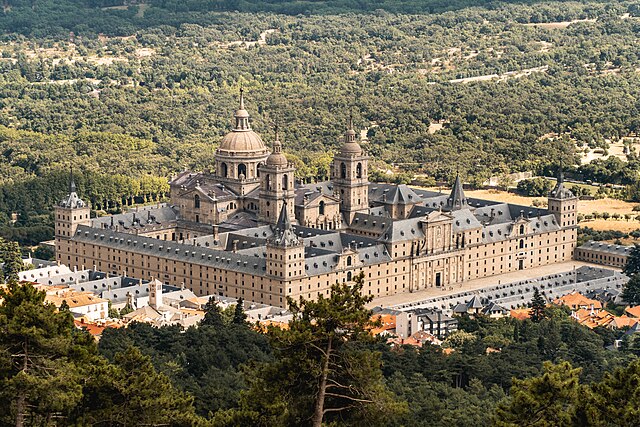Imperial Route of the Community of Madrid
The Imperial Route of the Community of Madrid is the tourist itinerary promoted by the Ministry of Culture and Tourism of this Spanish region, which runs through several municipalities in the Sierra de Guadarrama. It partially follows the historical road that led to the Monastery of El Escorial, used in the 16th century by King Philip II in his travels from the city of Madrid to the Royal Site.
The Imperial Route is articulated around the Royal Monastery of El Escorial.
Philip II promoted different works in the towns near the monastery of El Escorial.
Juan de Herrera, architect of the Royal Monastery
Royal Library of San Lorenzo de El Escorial, one of the most important places in the Monastery
El Escorial, or the Royal Site of San Lorenzo de El Escorial, or Monasterio de El Escorial, is a historical residence of the King of Spain located in the town of San Lorenzo de El Escorial, 2.06 kilometres (1.28 mi) up the valley from the town of El Escorial and about 45 kilometres (28 mi) northwest of the Spanish capital Madrid. Built between 1563 and 1584 by order of King Philip II, El Escorial is the largest Renaissance building in the world. It is one of the Spanish royal sites and functions as a monastery, basilica, royal palace, pantheon, library, museum, university, school, and hospital.
A distant view of the Royal Site
El Escorial: floor plan, based on the floorplan of Solomon's Temple
Courtyard of the Kings and the Basilica.
El Escorial. View from the northwest








